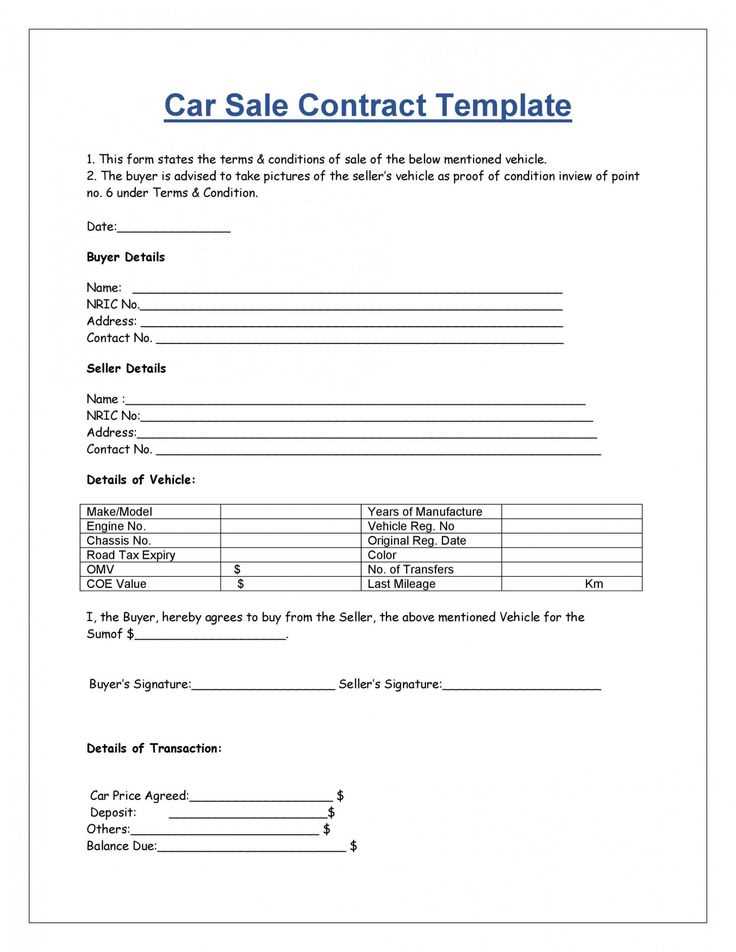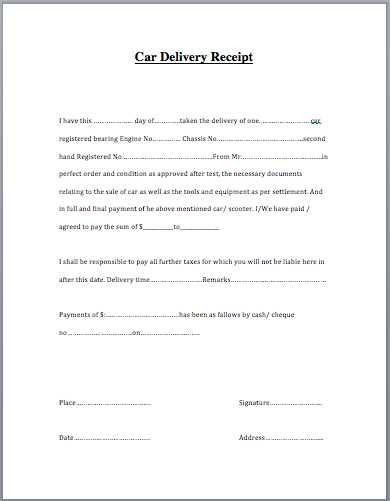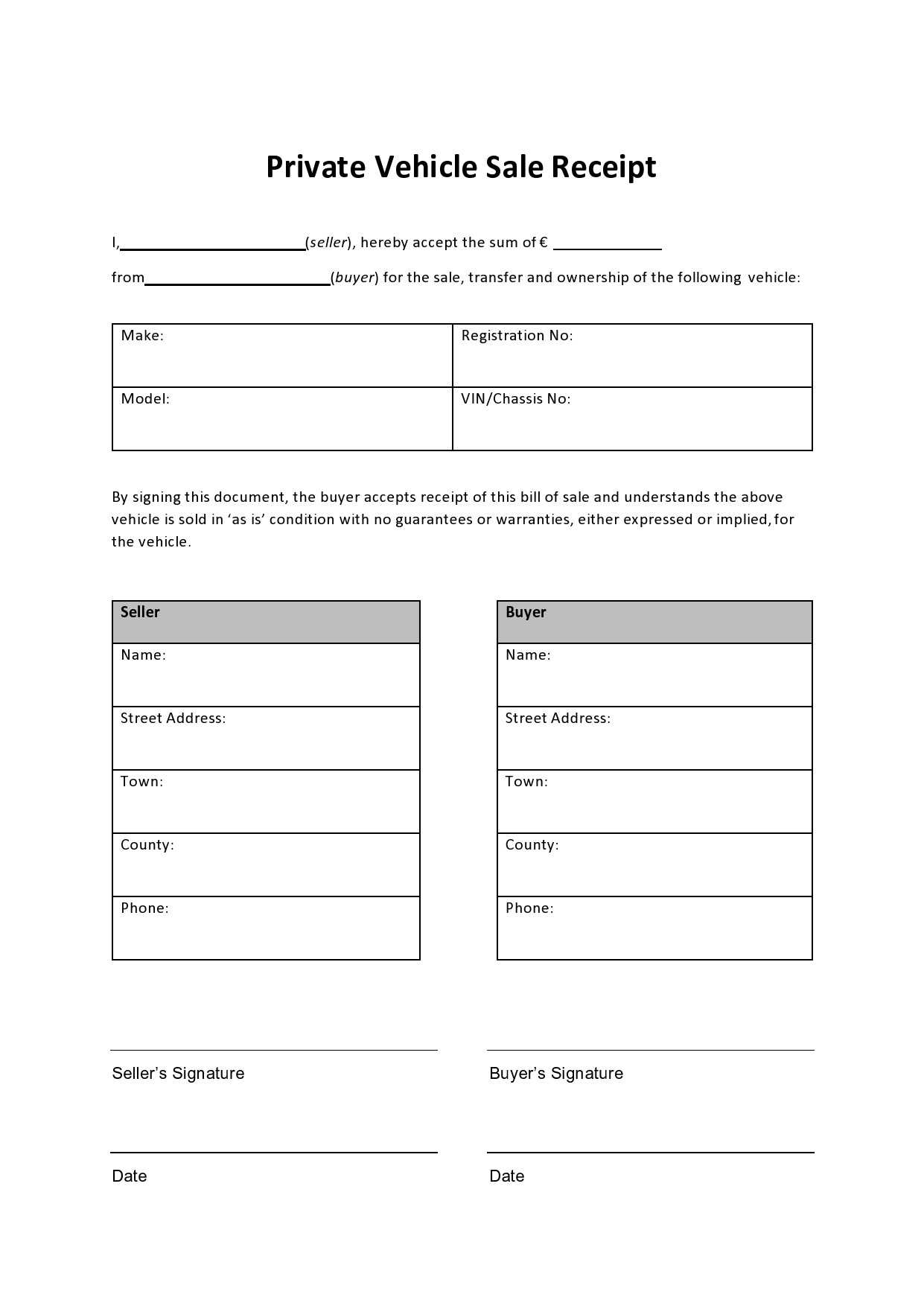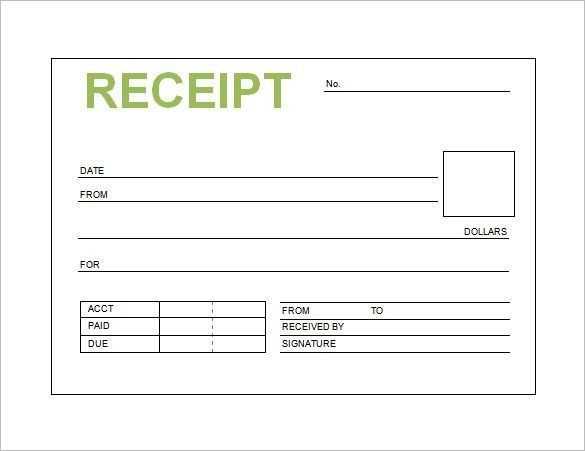
Key Elements of a Car Sales Receipt

A well-structured car sales receipt protects both buyer and seller. Ensure your document includes these details:
- Date of Sale: Clearly indicate the transaction date.
- Buyer and Seller Information: Include full names, addresses, and contact details.
- Vehicle Details: Specify make, model, year, VIN, mileage, and color.
- Sale Price: Clearly state the agreed amount and payment method.
- Payment Confirmation: Note whether the payment was in full or part, including any deposit details.
- Sold As-Is Clause: Protect the seller by indicating the car is sold without warranties.
- Signatures: Both parties must sign and date the document to make it legally binding.
How to Create and Use a Car Sales Receipt Template

Drafting a receipt from scratch can be time-consuming. Use a structured document format to streamline the process.
Step 1: Choose a Format
Microsoft Word and Google Docs offer easy-to-edit templates. Ensure the file is in .doc format for compatibility.
Step 2: Customize the Template

Fill in the necessary fields with accurate information. Leave space for signatures and any additional notes.
Step 3: Print and Sign

Both parties should sign and retain a copy. Digital signatures can be used for online transactions.
A detailed sales receipt prevents disputes and serves as proof of ownership transfer. Always verify information before finalizing the document.
Car Sales Receipt Template Doc
Key Elements to Include in a Vehicle Sales Receipt
How to Format a Sales Receipt Document
Legal Considerations for a Vehicle Purchase Receipt
Customizing a Template for Private Transactions
Common Mistakes to Avoid in Sales Receipts
Where to Download Printable Receipt Templates
Always include the buyer and seller details. A complete receipt must have full names, addresses, and contact information for both parties. This ensures clear identification and accountability.
Specify vehicle details accurately. List the make, model, year, VIN, and mileage. A missing or incorrect VIN can cause legal issues and delays in title transfers.
Outline payment terms and conditions. Clearly state the total price, payment method, and any deposits or installments. If the payment is in cash, note it explicitly to prevent disputes.
Include the sale date and signatures. The transaction date must be accurate, as it determines ownership transfer timing. Both parties should sign the receipt, and each should keep a copy.
Add a liability release statement. Protect the seller from future claims by stating that the vehicle is sold “as-is” without warranties unless otherwise agreed in writing.
Use a structured format for clarity. Arrange information in sections with bold labels. This improves readability and ensures no crucial detail is overlooked.
Check local legal requirements. Some regions mandate specific disclosures or additional paperwork. Research state or country regulations to ensure compliance.
Customize the template for private sales. If selling without a dealership, remove commercial clauses and add any agreed conditions, such as pending inspections or title transfer deadlines.
Avoid common errors. Missing signatures, incorrect VINs, vague payment details, and omitted sale dates can lead to legal disputes. Double-check all information before finalizing the receipt.
Download ready-to-use templates. Many government websites and legal platforms offer free printable templates. Choose one that fits your jurisdiction and transaction type.


